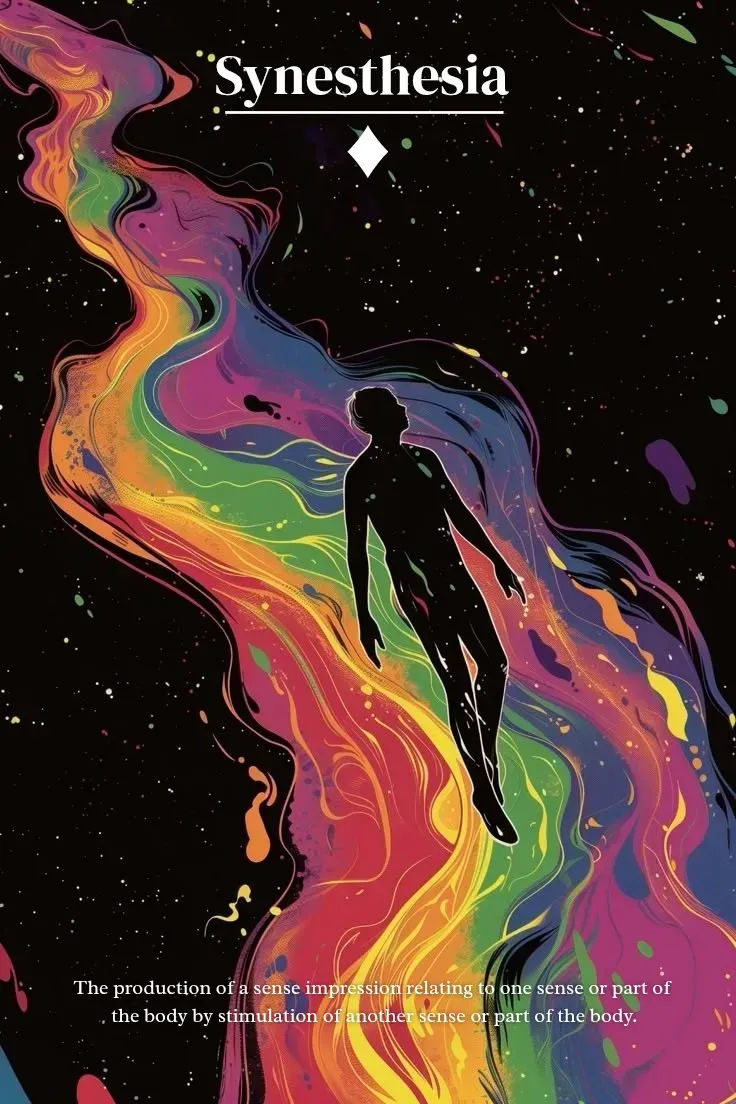
View full image
Synesthesia
Synesthesia is a perceptual phenomenon in which stimulation of one sensory or cognitive pathway leads to involuntary experiences in a second sensory or cognitive pathway. People with synesthesia may experience colors while listening to music, see shapes while smelling certain smells, or perceive tastes while seeing words. It's natural, not an illness, and people with synesthesia are called synesthetes.
Types of synesthesia:
• Music in synesthesia, or sound-color synesthesia, also known as chromesthesia. where you can see specific colors when you hear certain sounds. It tends to be specific to certain sounds or music. Musicians and artists often describe having this form. Such as, Hearing heavy metal music might feel like pins and needles on the legs.
• Auditory tactile synesthesia: This type of synesthesia can cause certain sounds to stimulate a sensation in part of your body. In other words, if you have auditory and tactile synesthesia, you may have a link between the sensory connections that dictate your sense of hearing and your sense of touch.
• Mirror-touch synesthesia is a feeling of physical touch on your body that you see happening to another person. For example, if someone with this condition were to observe someone touching their cheek, they would feel the same sensation on their own cheek.
• Emotion color synesthesia is a condition where some specific things, like textures, colors, or sounds, are consistently and involuntarily associated with emotional responses, such as a person might experience a feeling of warmth when seeing a specific color.
• Spatial sequence synesthesia consists of visualising certain sequences in physical space. There are different types, and a particular synesthete may have just one type or several at the same time. Spatial sequencing has a high prevalence within the synesthete population and is even often found among non-synesthetes or people who have no other types of synesthesia.
• Number-form synesthesia: People with this type of synesthesia perceive numbers as a sequence visualised spatially around them or in front of them. Example: One person might see the numbers 1 through 100 as a spiral, with each number having its own place on the spiral.
It is estimated that 2% to 4% of the worldwide population are synesthetes. The real number is potentially higher. This is because many are so used to how they experience the world that they don’t know there’s something else going on. Others may feel embarrassed by their experiences, leading them to hide their synesthesia.
Synesthesia has many perks. There is evidence that synesthetes have stronger memory capabilities. Intelligence tests often show higher scores for synesthetes. There are also strong ties between creativity and synesthesia.
Article by Mithila Tasnim (Batch - 2026)